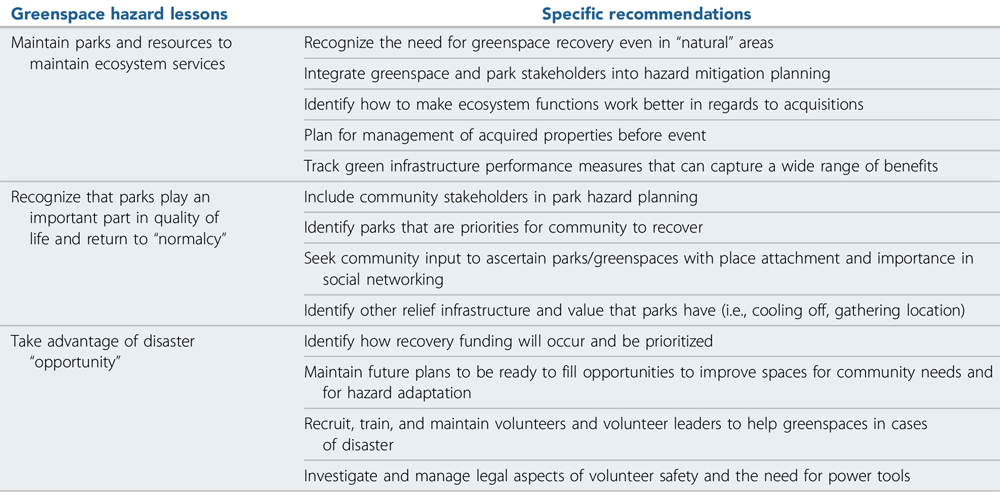Uncovering JAPA
Greenspace Resilience in the Wake of Disasters

What role does greenspace play in recovery after disasters?
In "Greenspace After a Disaster," a recent Viewpoint article for the Journal of the American Planning Association (Vol. 86, No. 3), Shaleen Miller notes that greenspaces are often damaged by major disasters, but that they are rarely considered when planning for recovery.
Greenspaces Overlooked in Disaster Recovery Planning
At best, they are seen as helping with mitigation. This is due to disaster planners' focus first on recovering human life and then aiding the economy, without giving significant thought to preserving greenspaces' long-term health and ecosystem benefits.
Miller recommends that disaster recovery planners give more thought to understanding the extensive benefits that greenspaces provide so that they can better weigh their importance.
Miller also notes that when greenspaces do finally receive attention after a disaster, they are usually simply reconstructed as they were or are sometimes even further damaged by harmful impacts of certain recovery measures, such as new development.
The moment after a disaster provides an opportunity to improve on original greenspace designs to make this infrastructure more resilient or to increase its usual health benefits — but this opportunity is rarely taken.
Therefore the author also recommends that disaster planners proactively consider how greenspace designs could be improved through disaster response resources such as federal or state funding or local volunteers so that they are ready when it comes time to utilize these resources.
Here is a full list of recommendations:

Table 1: Greenspace recovery and resilience recommendations.
2020 Disasters Shape Response Planning
The article feels particularly relevant after 2020 brought the most active hurricane season on record in the United States, and California and Oregon saw some of their worst forest fires, at a time during the COVID-19 pandemic when outdoor greenspaces have provided an important escape for residents to benefit from nature.
As disaster planners look to update their response plans for 2021, Miller's recommendations offer a useful framework for how disaster response can provide the opportunity to make green space infrastructure more sustainable.
Top image: Flooded Laughlin City Park along the Roubidoux Creek at Waynesville, Missouri, in 2013. Photo by Steve Zumwalt/FEMA.


